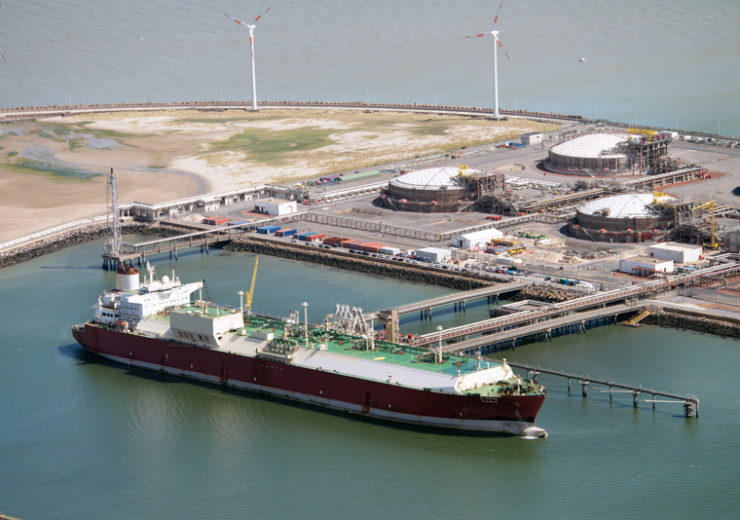The Zeebrugge LNG terminal in Belgium has an LNG storage capacity of 380,000m3 spread over four tanks

Image: The Zeebrugge LNG terminal in Belgium. Photo: courtesy of Qatar Petroleum.
Qatar Petroleum (QP) has agreed to subscribe to the full liquefied natural gas (LNG) regasification capacity of Fluxys Belgium’s Zeebrugge LNG terminal located in the outer port of Zeebrugge in Belgium.
In this connection, the Qatari company’s subsidiary Qatar Terminal (QTL) has signed a long-term agreement with Fluxys Belgium for LNG unloading services at the LNG terminal.
The subscription by QTL will be from the expiry of existing long-term unloading contracts and up to 2044.
The deal follows a competitive evaluation process and also approval from the Belgian regulators.
Under an existing agreement, QTL has been using nearly 50% of the capacity of Zeebrugge LNG terminal for delivering LNG sourced from Qatar into Belgium as per long-term LNG arrangements.
Fluxys Belgium CEO and executive board chairman Pascal De Buck said: “This agreement further extends our long-standing cooperation with our Qatari partners, secures long-term activity at the Zeebrugge terminal and further strengthens the facility’s position as a versatile LNG gateway into Europe offering customers optimum destination flexibility.
“Ample pipe gas take away capacity from the terminal is readily available for delivery throughout North-West Europe as well as a range of options for downstream small-scale LNG distribution.”
Storage capacity of the Zeebrugge LNG terminal
Commissioned in 1987, the Belgian LNG terminal currently has an LNG storage capacity of 380,000m3 distributed across four tanks. Its annual throughput capacity is nine billion cubic meters of natural gas.
Currently, a fifth storage tank with a capacity of 180,000m3 is under construction at the LNG regasification terminal.
Along with the Zeebrugge area as a whole, the Zeebrugge LNG terminal had been developed into a central crossroad for the gas network in North-West Europe. The LNG terminal is located at the point where various gas pipelines meet.
Qatar Petroleum president and CEO Saad Sherida Al-Kaabi said: “We believe this arrangement will further support our customers in Belgium and Europe in general, by providing access to reliable LNG supplies from Qatar and allowing our customers to maximize the utilization of such supplies.
“Qatar Petroleum has long invested in and anchored LNG receiving terminal capacity in Europe, a key gas market, as part of our supply destination portfolio diversification strategy. We continue to be committed to supporting the EU’s energy policies and providing reliable energy supplies into Europe.”
